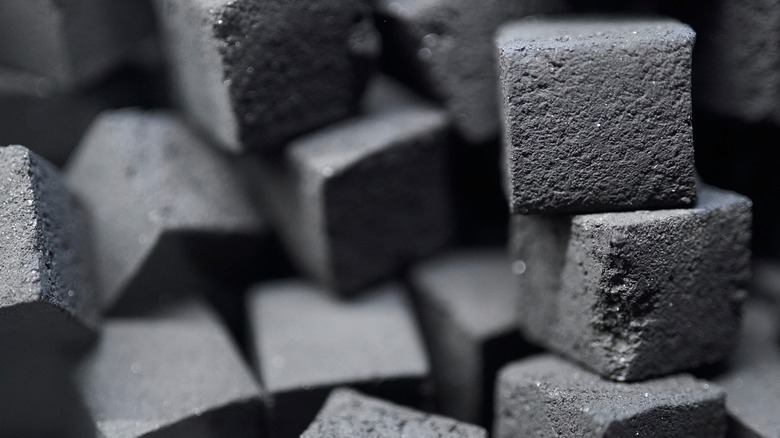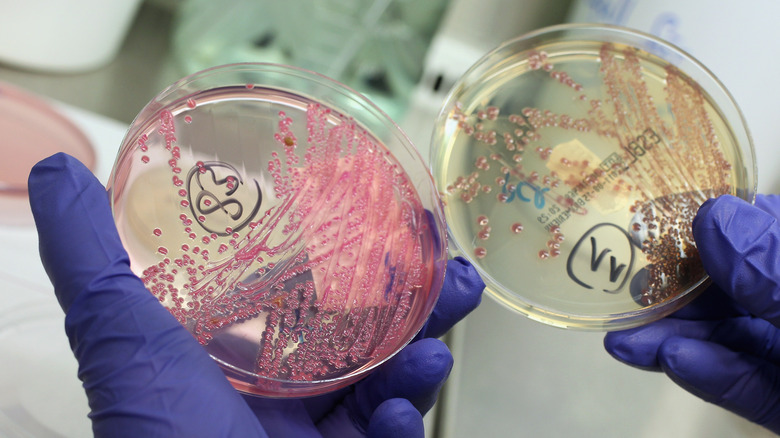8 Strange Renewable Energy Sources Being Explored Today
The increasing adoption of renewable energy mandates by countries around the world has led to massive investment in the green energy sector, although for now, energy generation in the U.S. is still dominated by fossil fuels. It's estimated that just 21.5% of all electricity generated in the U.S. in 2022 came from renewable sources, but a number of ongoing wind, solar, and hydroelectric projects promise to increase that figure in the near future. However, while the three most popular sources of renewable energy continue to become more prevalent, research is also ongoing to find more unusual sources of energy.
One of the most promising ways to find new renewable energy sources is to look at waste. Whether it's coffee waste, wasted heat, or even human waste, there are teams of researchers looking at ways to convert them all into ready sources of energy. Some of these unique energy generation schemes already have smaller-scale prototype systems in place, although for now, none have been widely adopted. Nonetheless, these eight all have plenty of potential — even if they're all very strange.
Burning bodies to heat swimming pools
Crematoriums produce a lot of excess heat during operation, most of which is usually wasted. The town of Redditch in England took the unusual step of building a heating system that channeled the excess heat from the crematorium to a nearby swimming pool, saving the local council thousands on heating costs in the process. The system was estimated to cut the pool's gas heater usage by around 40%, although it wasn't without its critics.
Understandably, some locals were uncomfortable about the idea of using heat from burning corpses to warm the pool. One local union even called it "an insult to local residents," according to the BBC. However, despite the resistance, work continued and the system opened in 2013.
It remains the only crematorium heat recovery system of its kind. Another facility in Durham, England, considered a similar system to heat nearby homes and generate electricity but ultimately decided against building it. Nonetheless, it remains a potentially cost-effective way of utilizing what would otherwise be wasted heat, albeit a controversial one.
Harnessing the steps of commuters
While each step might only produce a very small amount of energy, combine every footstep of every commuter or shopper in a busy city street and those steps add up. British startup Pavegen has developed technology to harness that energy, with paving tiles that capture a few joules per step and can be laid just like regular pavement.
In a recent interview with Forbes, the company's CEO said that the idea came about as a result of a failed project to create renewable energy generation systems in large cities. Traditional renewable sources like wind and solar aren't practical to install in urban spaces, so Pavegen was created as an alternative way to capture energy that would blend in better with city streets.
So far, Pavegen has installed a number of successful small-scale demonstration projects in cities around the world, including Chicago, Melbourne, and London, and is in talks with Saudi Arabian officials to install its paving in one of the country's upcoming megaprojects. While the amount of energy the system can generate remains fairly small, it's still enough to power signs, lighting, and other city infrastructure, so it may well become a more common sight in the near future as Pavegen continues to develop the technology.
Turning coffee grounds into biofuel
Most coffee grounds end up in a landfill after being used, but a team at Lancaster University has developed a process to make biofuel with the waste grounds instead. The idea isn't unique –- there were already commercial companies developing a similar process -– but the researchers' method cut processing time down significantly. The new method uses methanol and a catalyst to break down the coffee waste and extract the oil within it, which could then be converted to biodiesel.
The whole process reportedly takes just ten minutes, as opposed to previous methods, which took up to two hours of heating to break down the waste and required extra chemicals to be added to the mix. The team estimates that up to 720,000 tonnes of biodiesel could be produced every year if all coffee waste was converted, although the practicalities of collecting coffee grounds for conversion remain a barrier to scaling the project for now.
Running a Royal Aston Martin on cheese and wine waste
The UK's King Charles is a long-time advocate for developing green technology and worked to cut his own carbon emissions by converting his classic Aston Martin to run on the byproducts of the wine and cheese industries. Specifically, it runs on bioethanol manufactured by a specialist alternative fuels company, which uses whey from cheesemaking and unsold white wine to create E85 fuel.
While it's not a process that could be scaled up to the mass-market level, using biofuels made from waste as an alternative to gasoline is potentially a great way to keep classic cars on the road without fundamentally changing their nature. There are a number of startups that offer electric conversions for classic cars, but in the eyes of many enthusiasts, taking the engine out of a car is taking away the appeal of the car itself.
A cheese and wine-powered car is by no means a perfect solution, but as waste-derived biofuels become more widely available, it might provide a lifeline to collectors looking to keep their cars on the road without needing to fundamentally change their powertrain.
Using human waste instead of charcoal
Various companies around the world offer methods of transforming human waste into useful products, but one of the most innovative yet simple is the Kenyan startup Sanivation. Improper disposal of human waste is an ongoing problem in the country, but Sanvation processes the waste into solid briquettes, which can then be burnt in place of using charcoal or wood. The waste is first treated to kill bacteria and then combined with another common waste product, sawdust, to create the solid blocks.
It burns much like regular charcoal, with most of Sanivation's customers being commercial clients that use it for cooking food or heating. Not only does it provide a way of safely disposing of sewage, but it also reduces local reliance on wood -– particularly important in a country that has lost 11% of its forest cover since 2000, according to data from Global Forest Watch.
Sanivation remains a relatively small operation for now, selling around 120 tonnes of product annually, but orders are reportedly increasing as more companies see the benefits of this unconventional fuel.
Using E. Coli to produce biodiesel
Although it's most commonly associated with nasty cases of food poisoning, E. Coli bacteria has an unlikely talent: it can convert sugars into biodiesel, naturally producing a compound that's very similar to conventional crude-derived diesel oil. It's been the subject of research for more than a decade, with scientists genetically modifying the bacteria in an attempt to make it produce biodiesel at a faster rate. There have been some significant improvements in the production rate observed, but for now, it remains too slow of a process to be anywhere close to commercially viable.
Scaling production up would also mean finding a solution to one of the most common problems with biofuel production. Since the bacteria require sugar to produce fuel, producing more sugar would reduce the amount of land available for growing food crops. A shortage of suitable arable land is already a growing problem in many regions around the world, and increased production of biofuel mass would significantly worsen that problem. So, for now, E. Coli's diesel generation remains a promising, if flawed, proposition.
Heating homes using the London Underground
Commuters on the London Underground collectively generate a lot of heat, which — as any regular user will know all too well — can make stations and trains unpleasantly hot in the summer. It also means that Underground stations tend to be significantly warmer during the winter, with some of that heat lost through ventilation shafts. In the borough of Islington, a new system was installed in 2020 to channel that excess heat to local homes and schools. Heat is captured from the ventilation shafts using an underground fan and diverted to homes using a network of pipes running across the borough.
The system provides both hot water and heating to over 1,350 homes during the winter months and can be reversed to pump cooler air into the Underground tunnels during summer. With the success of the project, London's transport authority is now looking to expand the system to new locations, although for now, those expansions remain only in the planning stage.
Generating electricity with humid air
The idea of being able to generate electricity from thin air might seem like a science-fiction myth, but one research team has developed a working prototype that does exactly that. Using material covered in microscopic pores, the prototype generator uses water droplets in humid air to create a small charge imbalance in the material, which can be converted to electricity. In theory, that could create a seemingly endless supply of electricity, although there are some big caveats to the idea.
The first is that only a very tiny amount of electricity is produced –- the author of the study told the Washington Post that it would take a billion tiny generators stacked on top of one another to partly power a single house. Nonetheless, the generators are so small that the entire stack would be only around the size of a refrigerator. Storing the produced energy has also proved to be a stumbling block for the team so far.
It's safe to say, then, that this technology is only in its very earliest stages, but if it can be scaled and further developed, it might still have plenty of potential yet.








